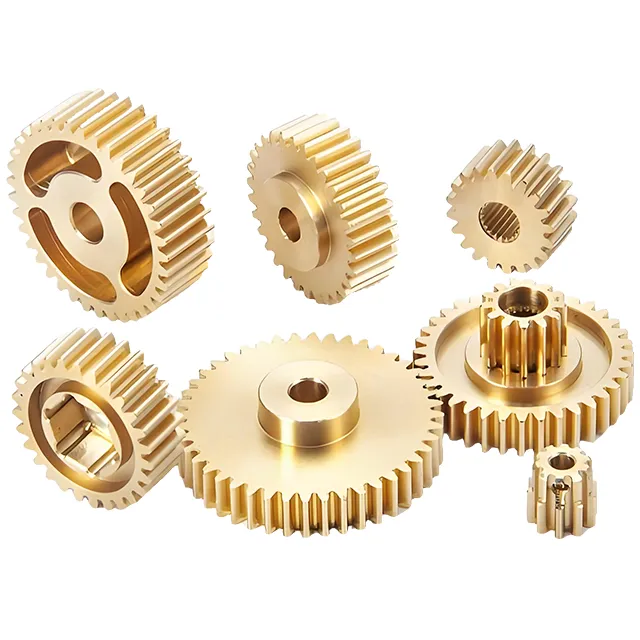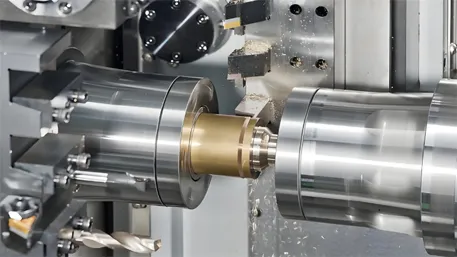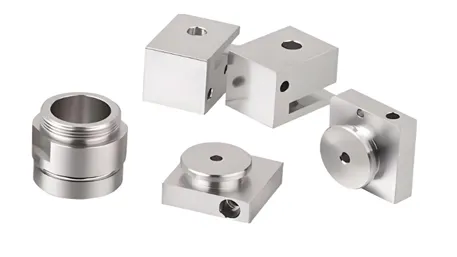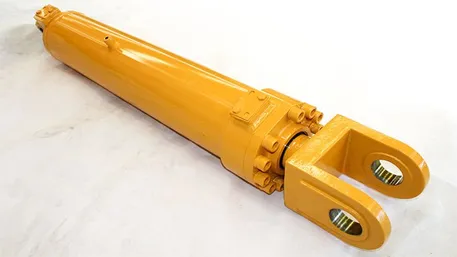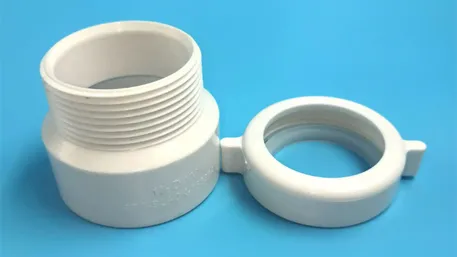In the field of bicycle manufacturing, the precision, performance, and lightweight design of parts directly affect the riding experience, speed, and safety. With the development of cycling towards professionalism and personalization, CNC (Computer Numerical Control) technology, with its excellent precision machining capabilities and material adaptability, has become the core technical support for customizing bicycle parts. This article will systematically analyze the technical logic and engineering value of customized CNC bicycle parts from dimensions such as technical advantages, materials engineering, processing technology, quality control, and industry applications.
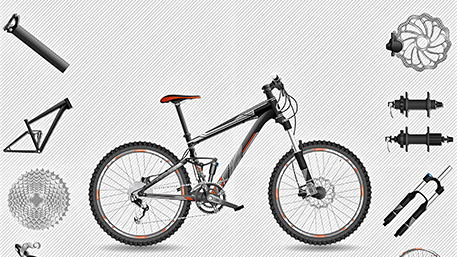
I. Core Advantages of CNC Technology in Customizing Bicycle Parts
CNC technology provides three core supports for the processing of bicycle parts through digital control and multi – axis linkage capabilities:
Micron – level Precision Assurance
The positioning accuracy of CNC machine tools can reach ±0.005mm, the repeat positioning accuracy is ±0.01mm, and the surface roughness Ra≤0.8μm. For example, when processing a bicycle bottom bracket, the roundness error of the journal can be controlled within ±0.002mm, ensuring stability during high – speed rotation and reducing mechanical wear and energy loss.
Full – dimensional Machining Ability for Complex Structures
Five – axis CNC equipment can achieve the machining of spatial curved surfaces, thin – wall structures (wall thickness ≤ 0.5mm), and micro – features that are difficult to complete with traditional processes. For example, the special – shaped tube joints of an aluminum alloy bicycle frame can be formed in one – step through five – axis milling, reducing weight by 30% while maintaining strength.
High Compatibility of Materials and Processes
CNC technology is compatible with various materials such as aluminum alloys (6061, 7075), titanium alloys (TC4), carbon fiber composites, and stainless steels (304). For different material characteristics, cutting parameters can be optimized: when processing 7075 aluminum alloy, high – speed cutting (HSC) technology is adopted, with a rotation speed of 15000r/min and a feed rate of 2000mm/min, increasing the efficiency by 40%; when processing titanium alloy, high – pressure internal – cooling tools are applied, extending the tool life by 3 times.
II. Materials Engineering and Selection Strategies for Customizing Bicycle Parts
Material selection is a crucial link in customizing bicycle parts and needs to be scientifically matched according to riding needs and working conditions:
Balance of Lightweight and Strength
For frames and wheelsets, 6061 aluminum alloy (density 2.7g/cm³, tensile strength 290MPa) or 7075 aluminum alloy (tensile strength 572MPa) is selected, reducing weight by 40% while ensuring structural strength and improving riding speed and maneuverability.
For high – end racing bicycles, titanium alloy (TC4, tensile strength 895MPa) or carbon fiber composites are used, reducing weight by more than 50% and doubling the fatigue resistance, which is suitable for high – intensity training and competitions.
Corrosion – Resistance and Wear – Resistance Design
For transmission system parts (such as sprockets and chains), stainless steel (304) or alloy steel with surface quenching treatment is selected, increasing wear resistance by 5 times to ensure long – term reliable operation.
For outdoor riding parts (such as brake calipers), aluminum alloy (6061) with anodizing treatment is used, and it can pass the 500 – hour salt – spray test without rust, extending the service life.
Optimization of Cost and Performance
Economical solution: Q235 carbon steel with surface treatment, the cost is 60% lower than that of alloy steel, and it is suitable for ordinary structural parts of entry – level bicycles.
High – end application: Although titanium alloy parts have a relatively high cost, they can significantly improve performance through lightweight design in professional competitions. For example, titanium alloy bolts can reduce weight by 60% while maintaining high strength.
III. Innovation and Optimization of CNC Processing Technology
In response to the special requirements of bicycle parts, CNC processing technology achieves a double breakthrough in efficiency and quality through the following technological innovations:
Multi – axis Linkage Composite Machining
Through five – axis linkage, complex curved surfaces can be machined in one clamping. For example, for the special – shaped arms and mounting holes of bicycle cranks, the processing efficiency is increased by 70%, and the position accuracy reaches ±0.01mm, avoiding errors caused by multiple clampings.
High – Speed Cutting (HSC) Technology
When processing aluminum alloy rims, the rotation speed can reach 20000r/min, the feed rate is 4000mm/min, the material removal rate is increased by 60%, and at the same time, cutting thermal deformation is reduced to ensure the dimensional stability of thin – wall rims (wall thickness 1.5mm).
Enhancement of Surface Treatment Processes
Anodizing treatment is carried out on aluminum alloy parts, with a film thickness of 10 – 20μm, improving corrosion resistance. It can pass the 500 – hour salt – spray test without rust, and can also be colored to meet personalized appearance requirements.
Nitriding treatment is carried out on transmission parts such as sprockets, with a surface hardness of HV900 or above, doubling the fatigue life.
IV. Quality Control System for Customizing Bicycle Parts
To ensure that products meet riding safety and performance standards, customized CNC bicycle parts need to go through a strict quality control process:
Dimension and Geometric Tolerance Detection
A coordinate measuring machine (CMM) is used for full – size scanning, and the tolerance of key dimensions (such as the diameter of the bottom bracket) is controlled within ±0.005mm.
Geometric tolerance detection: The roundness error is ≤0.003mm, and the coaxiality is ≤0.01mm to ensure the assembly accuracy of parts.
Materials and Mechanical Property Verification
Spectral analysis is used to confirm the material composition. For example, the zinc content of 7075 aluminum alloy needs to be ≥5.1 – 6.1%.
Tensile tests, impact tests, and hardness tests are carried out to ensure that the mechanical properties meet standards such as GB/T 3190. For example, the yield strength of TC4 titanium alloy is ≥825MPa.
Function and Reliability Testing
Dynamic balance testing is carried out on wheelsets, with an unbalance amount of ≤15g to ensure high – speed riding stability.
Fatigue testing is carried out on frames, with 500,000 cycles without cracks to ensure long – term use safety.
V. Industry Application Practices
Frames and Suspension Systems
Customized 7075 aluminum alloy frames, after five – axis CNC milling, reduce weight by 35% and increase torsional stiffness by 20%, which is suitable for road bicycle racing.
The TC4 titanium alloy shock absorber piston rod reduces weight by 40% and has a tensile strength of ≥895MPa, improving the shock – absorbing performance of mountain bikes.
Transmission and Control Systems
20CrMnTi alloy steel sprockets, after CNC hobbing, have a tooth profile accuracy of ISO 6, increasing the transmission efficiency by 15% and extending the service life by 3 times.
The aluminum alloy (6061) handlebar stem has personalized patterns engraved by CNC, with a surface roughness Ra≤0.4μm, combining aesthetics and anti – slip functions.
Wheelsets and Braking Systems
Customized aluminum alloy (6061) rims, after CNC turning and anodizing, have a dimensional tolerance of ±0.01mm, improving corrosion resistance and ensuring long – distance riding safety.
Stainless steel (304) brake discs, after CNC precision drilling, have a 25% improvement in heat dissipation performance, ensuring high – speed braking stability.
VI. Frequently Asked Questions (FAQ)
What is the precision of customized CNC bicycle parts?
CNC processing can achieve a dimensional tolerance of ±0.005mm, a repeat positioning accuracy of ±0.01mm, and a surface roughness Ra≤0.8μm, meeting the high – precision requirements of racing – level bicycles.
How to choose suitable materials?
It is necessary to choose according to the type and requirements of riding. For example, aluminum alloy or carbon fiber is selected for road bicycles to pursue lightweight, titanium alloy is selected for mountain bikes to focus on strength, and economical carbon steel can be selected for ordinary riding.
What is the production cycle for customizing parts?
The production cycle depends on the complexity of the parts and the materials. Simple parts usually take 5 – 7 days, and complex parts may take 10 – 15 days. Urgent customization is supported to shorten the delivery time.
Can CNC processing achieve personalized appearance design?
Yes, CNC technology can achieve personalized appearance through processes such as engraving, polishing, and surface treatment. For example, patterns can be engraved on aluminum alloy parts or colored anodizing can be carried out.
Is the cost of customizing bicycle parts higher?
The initial cost of customized parts may be higher than that of standard parts, but CNC technology reduces the unit cost by optimizing processes, and the high precision and performance can extend the service life of parts, making the long – term cost – performance ratio more favorable.
Consult Now and Get a Tailored Solution!
Whether it is a lightweight racing – level frame, a durable mountain bike transmission system, or personalized urban commuting parts, our professional team will rely on the high – precision advantages of CNC technology, combined with materials engineering and process innovation, to provide you with a full – process customization service from design, processing to inspection. Click to leave a message, and let us use a rigorous technical system and reliable quality assurance to customize high – performance and personalized CNC parts solutions for your bicycle, helping you unleash extreme performance and unique charm in the cycling world!

